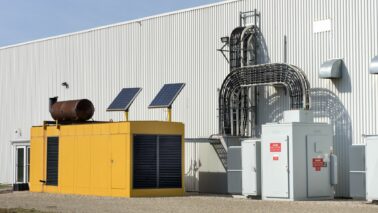Within the NFPA 70 National Electrical Code (NEC), there are four main types of standby power systems. Understanding the differences and requirements for each of types of standby power systems is essential and greatly affects the way you design, install, maintain, and test your generator and emergency systems. Sometimes a single system or generator may be used to power both emergency, legally required, or optional loads. In these cases, you must abide by the more stringent code requirements.
1. Emergency Systems (Level 1 or Critical Life Safety Systems)
NEC Article 700
These systems are legally required for critical facilities and include systems that are essential for safety to human life. These systems are especially evident in the healthcare industry as equipment must be powered to maintain and support human life. It is mandated that power must be available within 10 seconds of an outage to these systems. Examples include fire alarms, exit and directional signage, emergency voice and alarm systems, automatic egress doors, etc.
2. Optional Standby Systems
NEC Article 701
These systems are required by codes to light or power equipment whose failure could create hazards, hinder rescue, or hamper firefighting operations. Power must be available for these systems within 60 seconds of an outage. Examples include hospital communication systems, ventilation and smoke removal systems, sewage disposal, fire pumps, elevators, etc.
3. Legally Required Standby Systems (Level 2 or Less Critical Systems)
NEC Article 702
This includes equipment or systems that the business itself deems business critical. Depending on the business's tolerance for downtime, they may choose to voluntarily apply stringent emergency and legally required standards. The systems that are included as optional standby differ for every facility and depend on what is most critical for business continuity and operations. The overall scope and power requirements of optional standby systems greatly affect the generator size. If the standby generator is overloaded in the case of an outage, the optional standby systems are the first to get disconnected.
4. Critical Operations Power Systems
NEC Article 708 (Added in 2008 in response to the 9/11 terrorist attacks and Hurricane Katrina)
These systems are required in facilities that, if destroyed or incapacitated, can disrupt national security, the economy, public health, or safety. Government agencies can designate any facility as a “designated critical operations area" which requires them to comply with more stringent codes. Examples include police stations, fire stations, emergency call centers, telecommunication carriers, data centers, and other critical infrastructure.
Read more about emergency power systems and solutions.
Share this Blog Post
Leave a question or comment:





